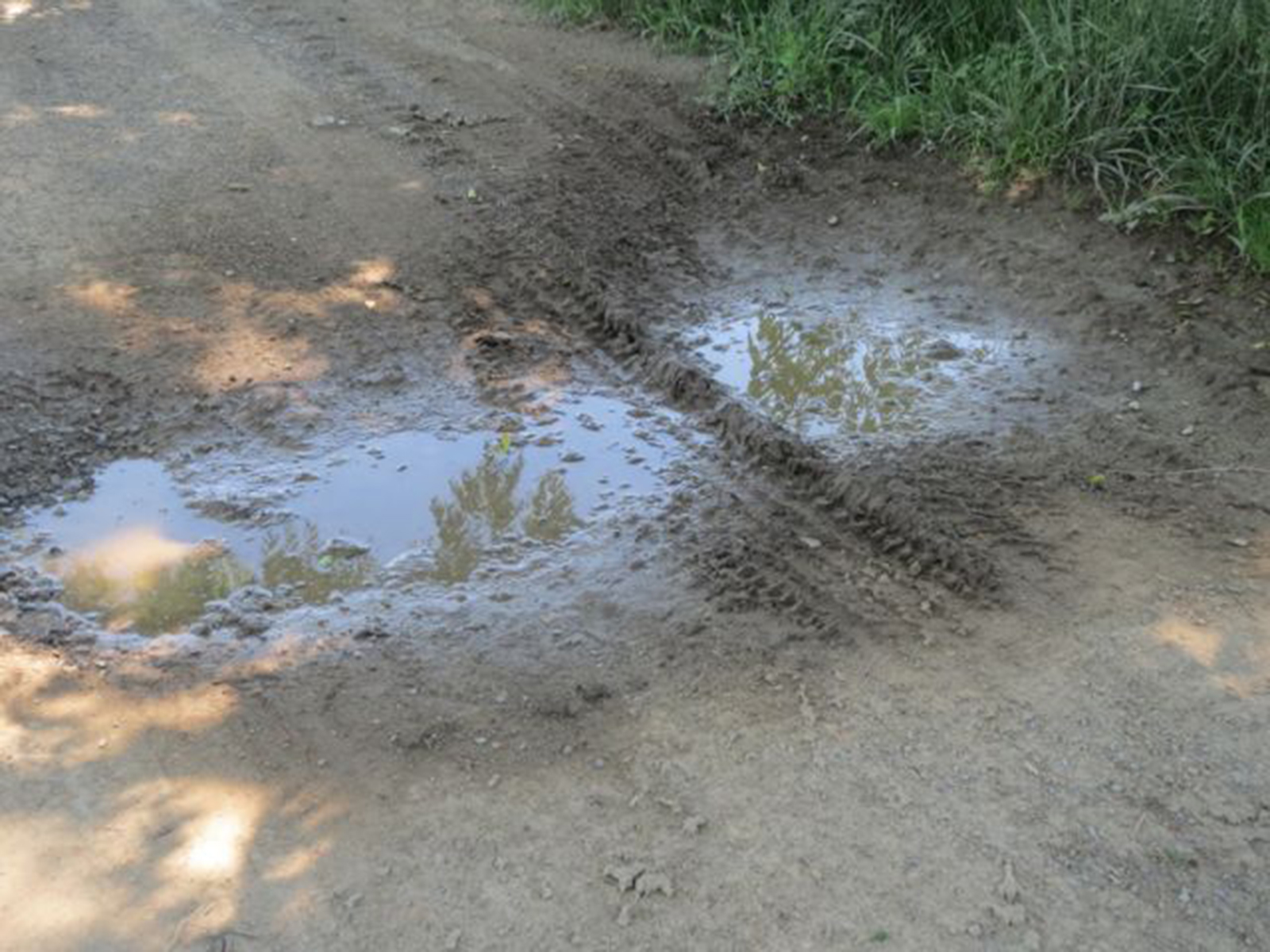—Judith Butler, “Toward an Ethics of Cohabitation”

In October 2013, Clare and Kevin lead a workshop for the students in Anne’s Critical Feminist Studies course. Building on our discussions about accessibility, they call this a “crip classroom,” and experiment with pacing the discussion—going as fast, then as slow as possible—as they introduce the students to the concepts of “crip time”:
Within the disability community, many use the term…to signify a flexible approach to temporal demands… . As Alison Kafer explains, “Crip time is flex time not just expanded but exploded; it requires reimaging our notions of what can and should happen in time… . Rather than bend disabled bodies and minds to meet the clock, crip time bends the clock to meet disabled bodies and minds.”Lindgren, “The
(S)paces of Academic Work,” 121.
“Bending time” by enacting varied pacing in the classroom, Clare and Kevin “enable” me and my students to experience some of the problematics of such an intervention: Going slow enables some students, disables others; going fast, ditto. Switching back and forth confuses us all. In our first shared experiment in access configuration, we realize that giving everyone in the room as many accommodations as possible can quickly become overwhelming—and may not be effective. Where, here, are the limits of accommodation? When-and-how might “accessibility” become “excessibility”?“Notes Towards Day 13: Cripping and Excessability,” Critical Feminist Studies, Bryn Mawr College, Fall 2013.
We’d like to do a better job at this.
The following week, Clare, Kevin, and I attend a conference on “Disability Disclosure in/and Higher Education,” organized by Stephanie Kershbaum and Margaret Price at the University of Delaware.“Disability Disclosure in/and Higher Education,” University of Delaware, October 2013, The conference models a variety of approaches to access. Stephanie and Margaret report that they
worked to reduce and eliminate fragrances…offered a quiet room…assembled a schedule that provided ample down-time opportunity…provided photographs of conference spaces accompanied by crowd-sourced descriptions; and…integrated interaction badges…to provide a means for participants to nonverbally signal their preferred level of interaction.Stephanie Kerschbaum and Margaret Price, “Perils and Prospects of Disclosing Disability Identity in Higher Education,” March 3, 2014.
This impressive range of interventions also marks, however, the impossibility of full access, as conflicts arise between those who require multi-sensory modes of access and those who find them distracting, those who need guide dogs and those who are allergic to them, those who request the assurance of safe spaces and those who recognize the unpredictability of triggers. Stephanie and Margaret themselves reflect on a number of other “inaccessible elements” in the event, raising “vital questions about the range of bodies and minds ‘allowed’ in academia”: those present are “overwhelmingly white,” “healthy and well enough to travel…can afford to spend three days in a rarefied space engaging in intellectual and social conversation, and…can procure institutional funding or other financial support.”Kerschbaum and Price, “Perils and Prospects.”
Nearly a year later, at the June 2014 conference of the Society of Disability Studies, Jody joins Clare, Kevin, and me on a panel reflecting further on some of the problematics of disclosure and accommodation.Jody Cohen, Anne Dalke, Kevin Gotkin and Clare Mullaney, “Intervening in the Accessible: Reassembling the Social in Disability Studies,” panel at the Society of Disability Studies, Minneapolis, MN, June 2014. The four of us perform our various vulnerabilities, privileges, and interdependencies through multiple modalities. We theorize accessibility, in front of videos of us telling stories from our lives. We are all also knitting, a practice that enacts a kind of “absent” presence of mind, while allowing us to hold in our hands the richness of the threads we are trying to weave together here. In doing so, we are, in part, celebrating accessibility, the way knowledge blossoms when we tear down barriers and fiercely commit ourselves to inclusion. We are also demonstrating how Disability Studies nuances our understanding of identity politics, challenging what we mean when we talk about self and social world as stable entities. Joining the field of Disability Studies in building an expansive notion of access, we are also querying a key presumption underlying that concept. We wonder how our multi-modal performance invites some in, others not; whether our very efforts to communicate with multiple, diverse beings in the room might itself be overwhelming, non-communicative.
As commonly defined and pursued, access requires a stable self and world. Much of the scholarship now bridging queerness and disability,Cf. Robert McRuer, “Cripping Queer Politics, or the Dangers of Neoliberalism,” The Scholar & Feminist Online 10.1–2 (Fall 2011/Spring 2012). however, refuses to “crystallise” identity in any specific form, and so brings analytical pressure to bear on “‘the open mesh of possibilities, gaps, overlaps, dissonances and resonances, lapses and excesses of meaning where the constituent elements…can’t be made…to signify monolithically.’”Eve Sedgwick, qted in Annamarie Jagose, Queer Theory: An Introduction (New York University, 1996), 99–100.
This sort of thinking has a long history. Theodor Adorno anticipated it, for example, when he offered the term “nonidentity” to describe the slippage between a concept and the material of that thing: “What we may call the thing itself is not positively and immediately at hand.”Theodor Adorno, Negative Dialectics, 2nd ed. (London: Bloomsbury Academic, 1981), 5. Nonidentity, Adorno said, accounts for that nagging feeling that something is being left out of the way we know things—what Jody elsewhere calls “haunting.”See Chapter 3, “Haunting.” No concept (no person, no thing) is singular or unified; no word exhausts the thing conceived. There is a chasm between reality and the language we use to grapple with that reality. Nonidentity is “heterogeneous” to all concepts, and “negative dialectics” is the method Adorno gave us for attuning to that “remainder.”
We find Adorno’s concept of nonidentity, as that which always escapes from the inadequate container that is language, useful as a means of problematizing the process of giving access. At a time when contemporary disability theory is offering competing ideas about how we should conceptualize “identity” (for example, Lennard Davis tolling the “end of identity politics”Lennard Davis, “The End of Identity Politics and the Beginning of Dismodernism: On Disability as an Unstable Category,” in The Disability Studies Reader, ed. Lennard J. Davis. 2nd ed. (New York: Routledge, 2006), 231–42. while Tobin Siebers calls for identity politics “in a new register”),Tobin Siebers, “Disability and the Theory of Complex Embodiment—For Identity Politics in a New Register,” in Disability Theory (Ann Arbor: University of Michigan Press, 2008). we are taken by a term, nonidentity, that at first seems to negate identity altogether, but in fact provides the basis for a positive affiliation across difference. A serious attunement to nonidentity gives us a route to re-conceptualize accessibility, as process that can be pursued when none of us fully knows, nor can fully express, either who we are or what we need. In Disability Studies, a field that is so deeply invested in identity, we relish a concept that allows us to think of our being bound together by what exceeds conventional identity categories (the disabled, the temporarily able-bodied).
Nonidentity is a key insight in ecological thinking, too. In a world filled with “fundamentally uncanny and unfathomable” entities, Timothy Morton observes, “life is non-identical to itself.”Timothy Morton, “Practising Deconstruction in the Age of Ecological Emergency,” in Teaching Ecocriticism and Green Cultural Studies, ed. Greg Garrard (New York: Palgrave Macmillan, 2012), 162. Beginning with such a concept of nonidentity, a more fluid, unbounded version of the self, invites us to acknowledge both the implacable particularities of individual impairment and a more “relational ontology,” with flux and flow as the intermediaries of power. Agency becomes tied up, entangled in the twisted social world. Attending to such synergies bears an ethical force; in the language of physicist Karen Barad, it demands a “responsibility for the reconfigurings of which we are a part.”Karen Barad, Meeting the Universe Halfway: Quantum Physics and the Entanglement of Matter and Meaning, (Durham: Duke University Press, 2007), 91.
How then to take up that responsibility? How to design for access? What does it mean to acknowledge the problematics of disclosure, the unpredictability of uptake, the likelihood of being taken unawares?
At the conference, we reimagine accessibility not as replacement or retrofit, more as an ambient ubiquitous interface, which cannot readily be pinned down. Our ruminations about the impossibility of full access draw on our own experiences, as well as on many contemporary theorists, within and outside of Disability Studies,Leo Bersani, Homos (Cambridge: Harvard University Press, 1996); Judith Butler, Notes Towards a Performative Theory of Assembly (Cambridge: Harvard University Press, 2015); Davis, 231–42; Jay Dolmage, “Universal Design: Places to Start,” DSQ: Disability Studies Quarterly 35, no. 2 (2015); Robert McRuer, Crip Theory: Cultural Signs of Queerness and Disability (New York: New York University Press, 2005). who work their way beyond the conceptualization of a stable self in a stable social order.
In critiquing the too-ready legibility of disability, the four of us look not to redefine the concept of access, but to re-imagine its structure; we do so by following the many ways in which Disability Studies is reshaping what we know about both identity and sociality. Our unravelings do not take access or accommodation lightly. We are not disregarding the ways in which access can make a difference in an ableist world; we are also not claiming that Disability Studies stops where the category of disability does, that disability itself has clear edges. Wanting to see Disability Studies cited in all the domains it is poised to reinvigorate, we enact some of this reach, critically examining what gets called identity, experimenting with how far out these categories might stretch.
Disability is not its own self-identical thing; there are strong differences among those who are assigned, or choose, that identity.Cf. Judith Butler and Sunaura Taylor, “Examined Life,” YouTube video, 14:23, October 6, 2010. Crossing the dividing line between disabilities that are stable enough to request predictable accommodations, and those that are not, means challenging presumptions about knowability, both of who we are and what we need. It means that access will always be not-entirely-known. There are no guarantees in this unpredictable process: a clarity of uptake not assumed, the outcome of calls for accessibility ultimately unreliable.
Clare, Jody, Kevin, and I situate our alliance in several connected and disconnected positions, telling stories of our own various disablings and enablings, from the perspectives of “selves” working our relations to the field of Disability Studies and “others” who im/possibly exist outside it, as well as from cracks within and between all these. We find our mode of residence in the crevices among disparate locales: spaces that are both personal and scholarly, pragmatic and abstract, real and imaginary. We’re interested in how voices intersect in moments of “access,” and figure here a continual shift in perspective, one grounded in our conviction that the self is never fully situated, thoroughly placed, or entirely anchored.

